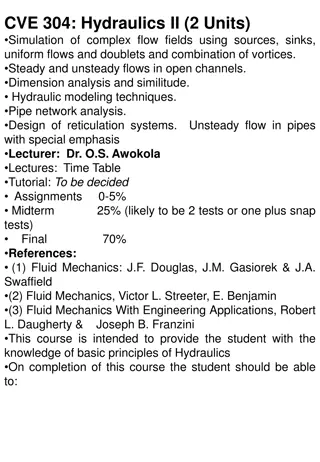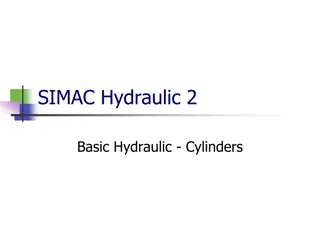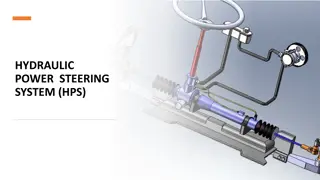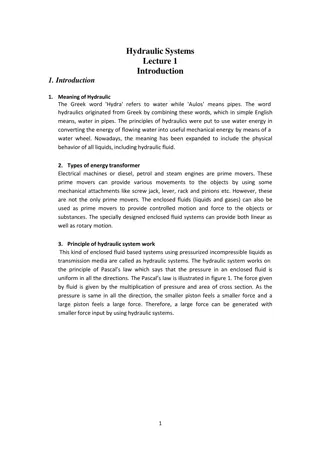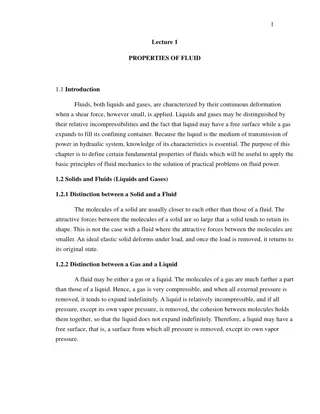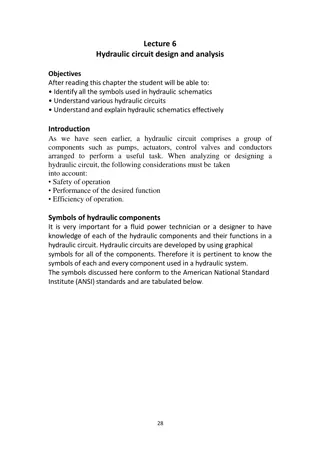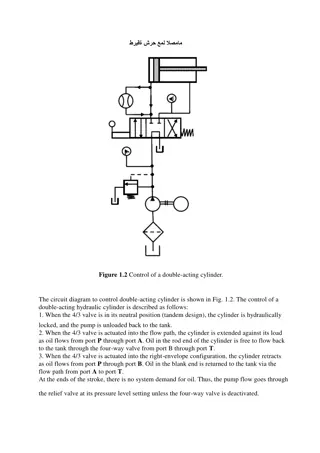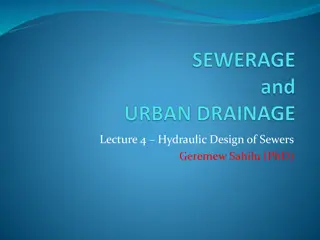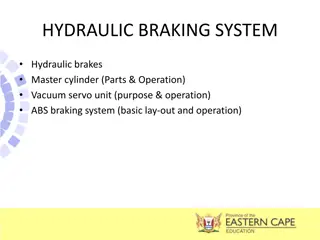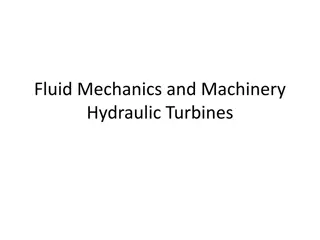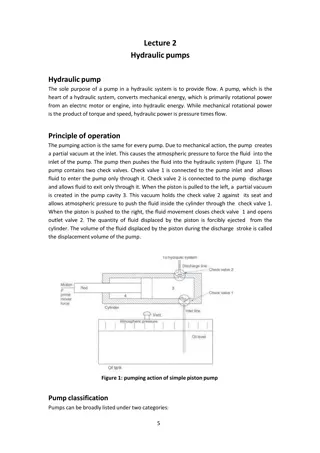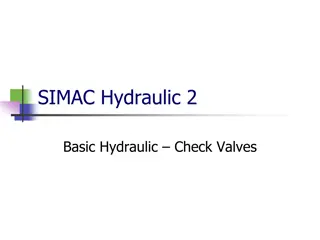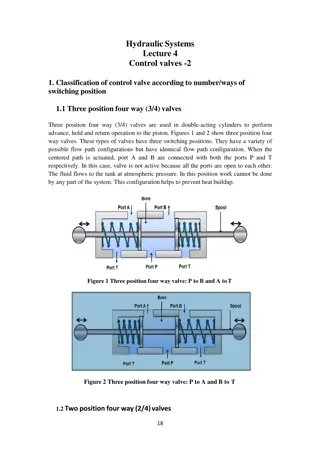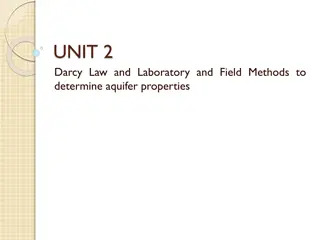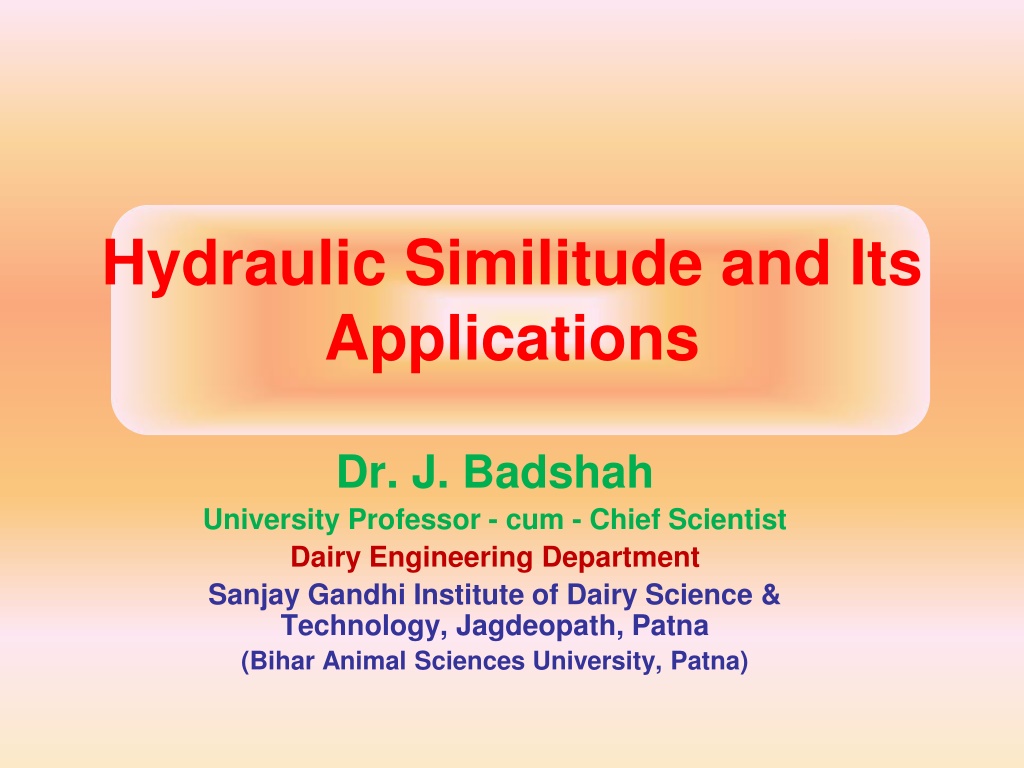
Understanding Hydraulic Similitude and Its Importance in Engineering Design
Explore the concept of hydraulic similitude and its applications in engineering design through prototyping and model testing. Learn about the importance of conducting model studies to save time, resources, and ensure the performance of various structures and equipment. Discover the significance of geometric similarity and the testing process for hydraulic structures, automobiles, and more.
Download Presentation

Please find below an Image/Link to download the presentation.
The content on the website is provided AS IS for your information and personal use only. It may not be sold, licensed, or shared on other websites without obtaining consent from the author. Download presentation by click this link. If you encounter any issues during the download, it is possible that the publisher has removed the file from their server.
E N D
Presentation Transcript
Hydraulic Similitude and Its Applications Dr. J. Badshah University Professor - cum - Chief Scientist Dairy Engineering Department Sanjay Gandhi Institute of Dairy Science & Technology, Jagdeopath, Patna (Bihar Animal Sciences University, Patna)
HYDRAULIC SIMILITUDE Prototype is the physical structure or equipments and machines for which engineering design is required. The predictions are made for the prototype to work under actual field conditions. Model is the scale down representation of any physical structure/Equipments/Machines. A model is smaller than the prototype so as to conduct laboratory studies and it is less expensive to construct and operate. Sometimes size of model can be larger than the prototype if amplified and more focused studies have to be carried out
HYDRAULIC SIMILITUDE Importance of Model Studies: A scale down model is tested under simulated condition to determine its performance. It saves time and resources. Sometimes mathematical relationships and equations are not sufficient to aid in engineering design. A model provides valuable data on geometrical appearance, force and pressure distribution, performance, capacity etc. Experiments are conducted on models and the problems can be rectified before actual design and commissioning is done. If the model fails it does not put financial pressure on the investors. Model can be easily improved and re-designing can be done if required. In many fields, there is great uncertainty as to whether a new design will actually do what is desired. New designs often have unexpected problems. A model is often used as part of the product design process to allow engineers and designers the ability to explore design alternatives, test theories and confirm performance prior to starting production of a new product
HYDRAULIC SIMILITUDE Equipment and its components are first tested by making models for its performance. Hydraulic structures like dams, canals, reservoirs, spill ways etc require model testing before its design is finalized. Automobiles, planes, rockets require model testing in wind tunnels. Similitude in a general sense is the indication of a known relationship between a model and prototype i.e. model tests must yield data that can be scaled to obtain the similar parameters for the prototype. The results obtained model experiments can be applied to the prototype only if a complete similarity exists between the model and prototype and for that the two systems must be (i) geometrically (ii) kinematically and (iii) dynamically similar.
Geometric similarity A model and prototype are geometric similar if and only if all body dimensions in all three coordinates have the same linear-scale ratio. It requires that the model and the prototype be of the same shape and that all the linear dimensions of the model be related to corresponding dimensions of the prototype by a constant scale factor. Usually, one or more of these pi terms will involve ratios of important lengths, which are purely geometrical in nature. lm/lp= bm/bp= hm/hp= dm/dp= Lr =constant Thus for geometric similarity, Where, lm, bm, hm, and dm= respective dimensions of the model lp, bp, hpand dp= corresponding linear dimensions of the prototype. Lr = constant known as scale ratio or the scale factor. Similarly Area scale ratio Volume scale ratio should be constant.
Kinematic similarity The homogeneous particles lie at homogeneous points at homogeneous times. In a specific sense, the velocities at corresponding points are in the same direction and are related in magnitude by a constant scale factor. This also requires that streamline patterns must be related by a constant scale factor. motions of two systems are kinematically similar if The flows that are kinematically similar must be geometric similar because boundaries form the bounding streamlines. The factors like compressibility or cavitations must be taken care of to maintain the kinematic similarity.
Dynamic similarity When two flows have force distributions such that identical types of forces are parallel and are related in magnitude by a constant scale factor at all corresponding points, then the flows are dynamic similar. For a model and prototype, the dynamic similarity exists, when both of them have same length-scale ratio, time-scale ratio and force- scale (or mass-scale ratio). For compressible flows, the model and prototype Reynolds number, Mach number and specific heat ratio are correspondingly equal. For incompressible flows, With no free surface: model and prototype Reynolds number are equal. With free surface: Reynolds number, Froude number, Weber number and Cavitation numbers for model and prototype must match.




